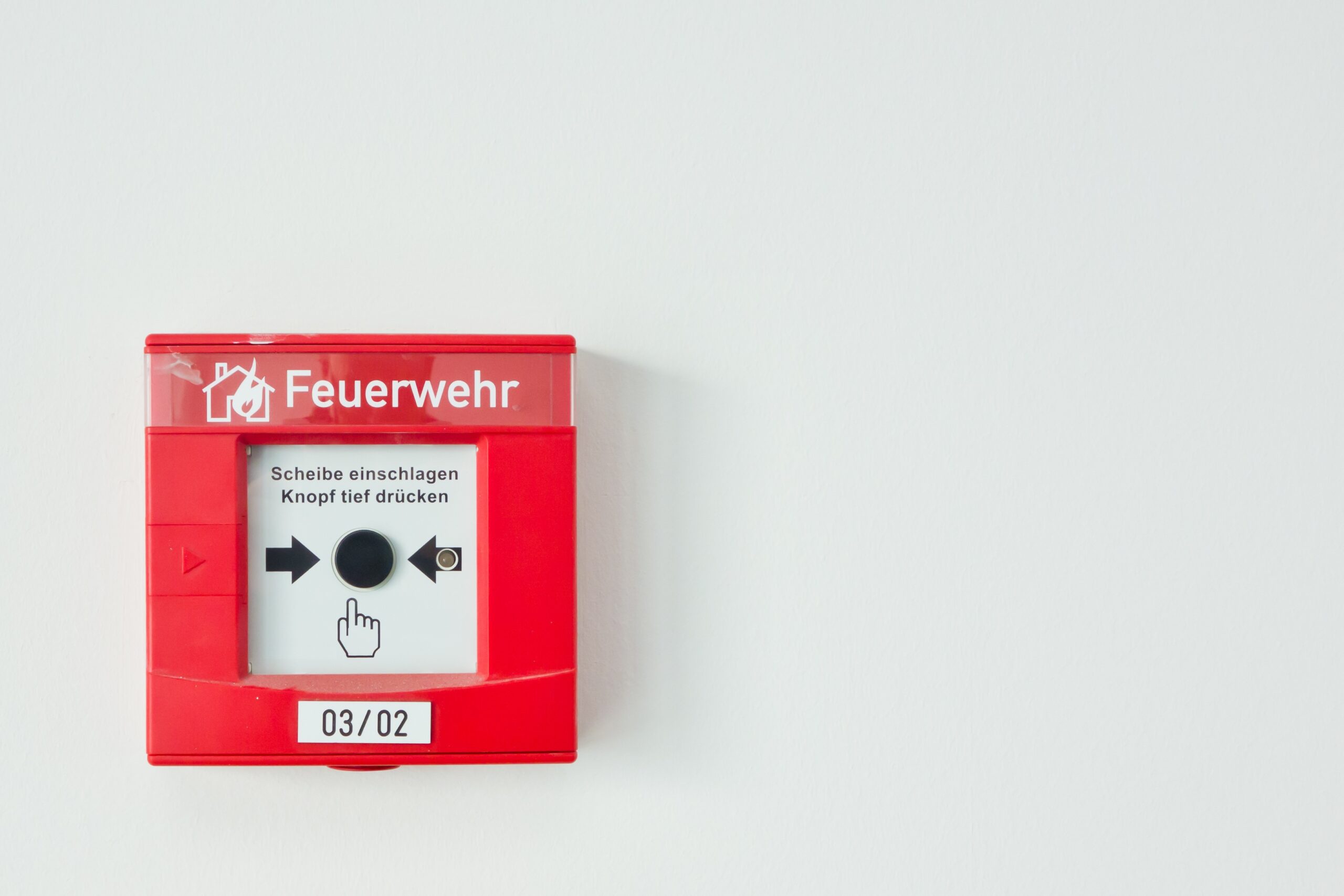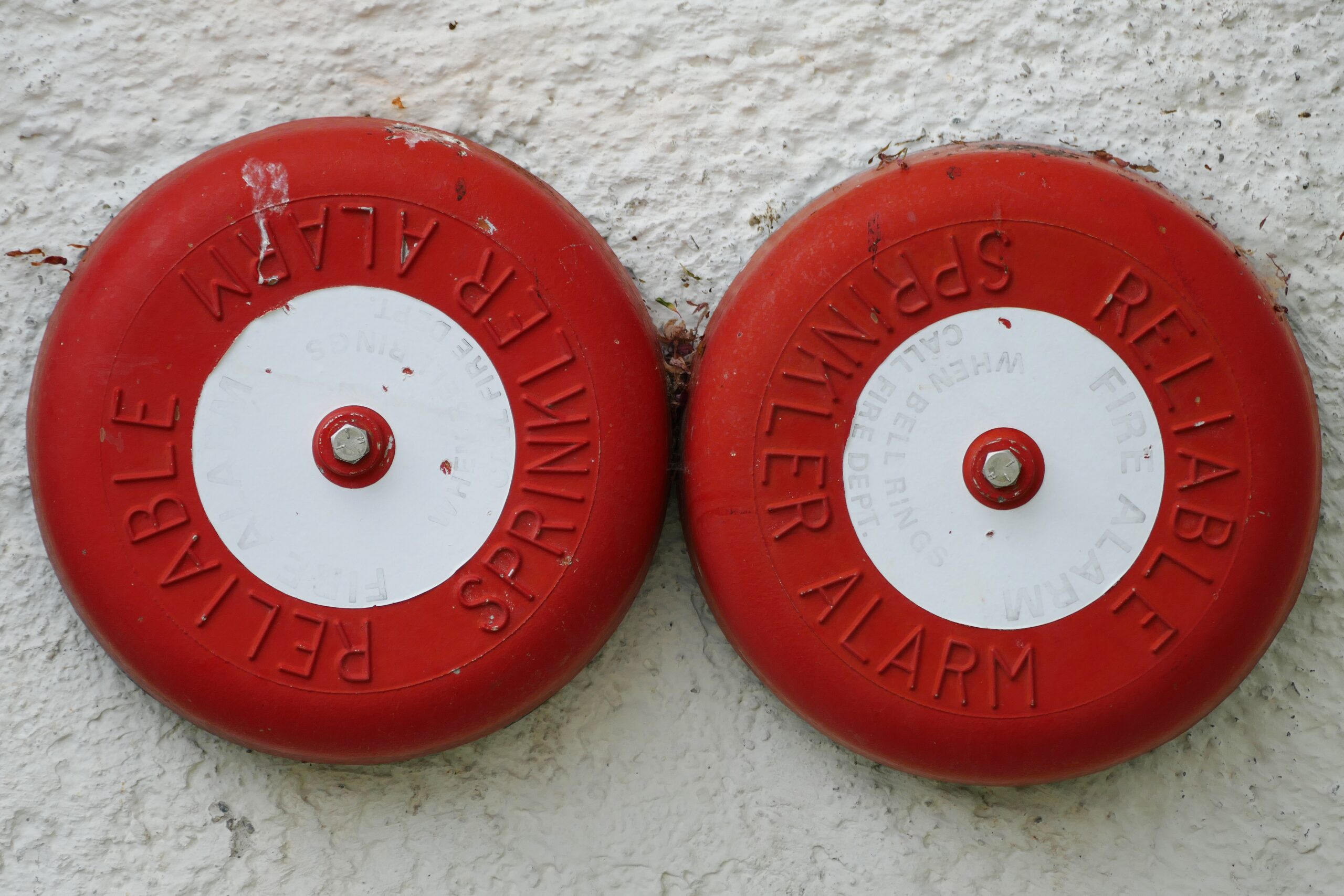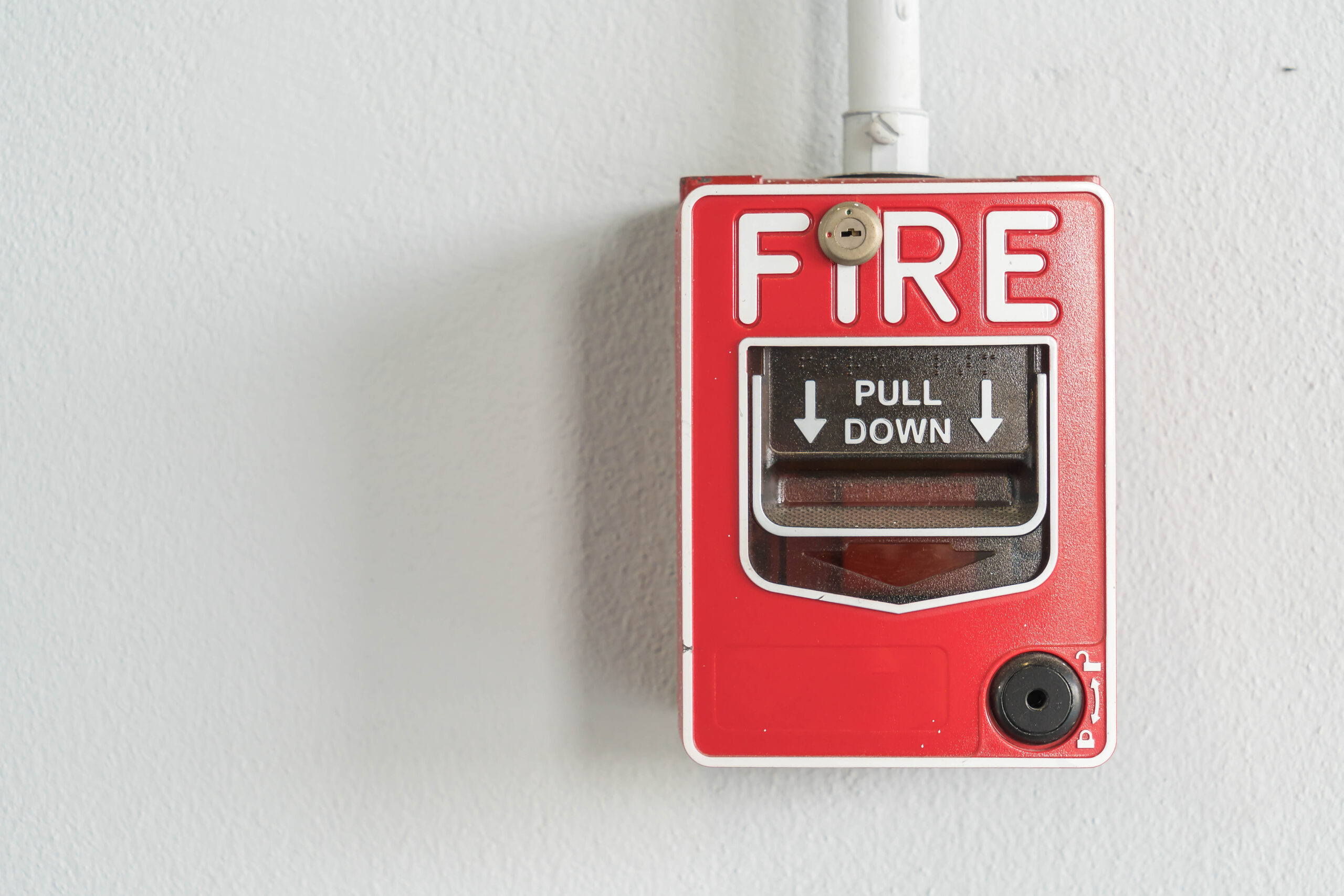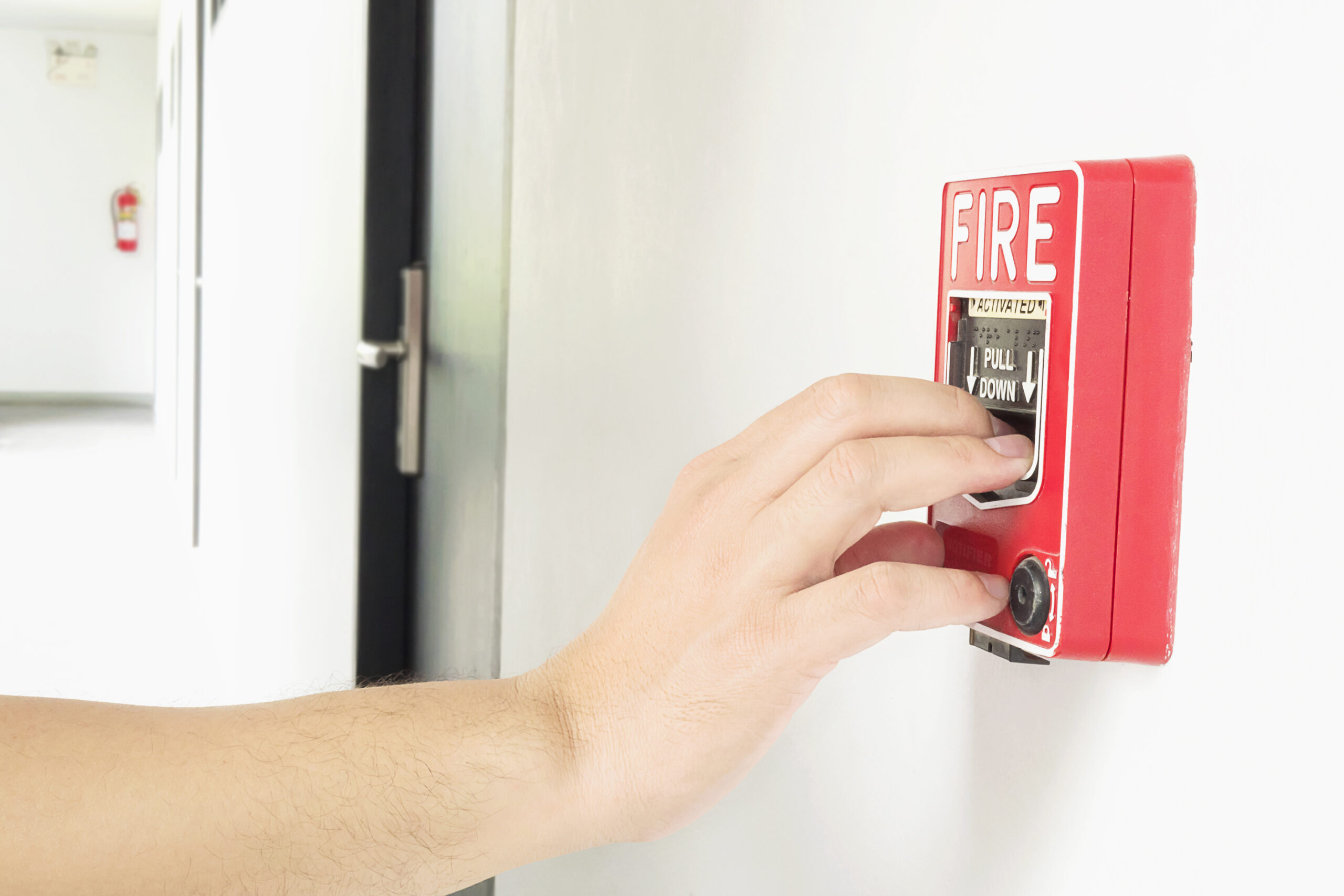Fire Alarm & Detection System






Fire detection and alarm is considered the building's first line of defense in the field of fire prevention. Due to the great importance of this system, technological development is moving in the direction of achieving early detection of fires, in addition to linking different types of detection and alarm devices. It is noted that there is a close link between the fields of security and fire protection. Fires, and there is no doubt that the alarm system has the ability to significantly reduce the loss of life and reduce the loss of property.
A fire alarm system is a group of devices that work together to detect fires, smoke, or gas leaks, to warn people through visual and audio devices and thus contribute to saving lives. These alarms can be activated automatically from smoke, heat or gas detectors, or they can be activated manually through the Manual Call Point (MCP). Once one of these devices detects the presence of fire or smoke, it sends a signal to the main panel that activates the alarm.
Purpose of fire alarm and detection systems
- This system can be used in any public or private building, factories, hospitals, etc. Its purpose:
Detect the fire & its location. - Alarming building occupants in order to escape.
- Fighting fire in its early stages.
- Notify the nearest fire station..
- Operating some automatic extinguishing systems or some services designated for fire prevention purposes remotely
Through the system panel..
Components of fire detection and alarm systems:
The system components in general are:
- Sensors or automatic fire detectors.
- Call point “manual warning button.
- Audio or visual alarm.
- Control units.
- Pipe and cable network.
- Control panel.
Sensors or automatic fire detectors.
Fire detectors are devices used to detect and identify the occurrence of a fire at an early stage, enabling the necessary measures to be taken to control the fire and limit damage. There are several types of fire detectors, and they differ according to the type of detection (thermal or smoke) and the detection method and techniques used. Here are some common types of fire detectors:
- كواشف الحرارة (Heat Detectors):
- It is based on measuring the temperature in the environment.
- Activated when the temperature rises to a level that indicates a fire has occurred.
- Used in areas that may contain large amounts of dust or smoke.
- كواشف الدخان (Smoke Detectors):
- It depends on the detection of fine particles or smoke.
- They are divided into two main types: ionic smoke detectors and optical smoke detectors.
- Modern types use laser technologies or thermal technologies to increase efficiency.
- كواشف اللهب (Flame Detectors):
- Responds to light or infrared radiation emitted by flame.
- Used in areas where smoke detection is ineffective.
- كواشف الغاز (Gas Detectors):
- It is used to detect and measure potential gas leaks to avoid fires.
- May be used in areas dealing with hazardous materials.
- كواشف الإشعاع (Radiation Detectors):
- It is used to detect nuclear radiation resulting from a nuclear fire.
- كواشف الغبار (Dust Detectors):
- Used in industrial environments where dust accumulation can cause fires.
- كواشف الاهتزاز (Vibration Detectors):
- It is used to detect vibration movement that may occur as a result of fire.
Call Points & Pull Stations
Break Glass or call points must be visible and in an area that is easily accessible, and they must be of an appropriate height and at close distances that do not exceed 30 meters in general. This follows the requirements of the Civil Defense and/or the responsible authority, so that the person does not have to go far. To activate the alarm.
Types:
- Pull Station (محطة السحب ):
This type of alarm activation equipment is more common in America and Canada, and these equipment come in two designs. The first is called a single action mechanism, as well as a dual-action mechanism. This mechanism aims to raise first and then pull down, which It reduces misuse or tampering by hackers, and the calling station cannot be returned to its normal state except by using its own key.
- Manual Call Point MCP (كاسر الزجاج أو نقطة نداء)
This is practiced in European countries and most countries in the world with the exception of North America, and its action is by pressing on a specific area that leads to the activation of fire alarms and/or any system that is connected to it, and it cannot be returned to the normal state after its activation except by using a special tool for this. the purpose.
Ring Bell
A fire alarm is a part of a fire alarm system used to issue an audio alarm if smoke or heat is detected, which helps in early alerting individuals in the area and contributes to avoiding risks resulting from fires. The fire alarm is installed in specific places inside the building, and when it is activated, it emits a strong alarm sound to alert people and direct them to take safety measures.
The design of the fire alarm bell depends on safety requirements and local legislation, and may have additional features such as the ability to connect it to smart alarm systems, and its ability to issue different tones to distinguish between different types of warning.
All of these features contribute to providing an immediate and effective alert when any sign of fire is detected, which contributes to protecting lives and property.
لوحة التحكم (FACP-Fire Alarm Control Panel)
The control panel is considered the mastermind, and through the control system within this panel, all devices associated with it can be controlled, starting from receiving signals from all types of detectors to sounding the necessary sirens and carrying out the tasks assigned to it. Alarm system control panels perform the following functions:
- Automatic monitoring and control of equipment’s external circuits (such as fire detector and fire alarm circuits) and supplying these circuits with electrical power.
- Show fire signs and false alarm signs and their locations.
- Manual control to facilitate procedures for checking and stopping devices, triggering fire signals, silencing audio fire alarms, and restarting the system after a fire signal.
- An audio and visual alarm is given when a fire occurs, specifying the area of its occurrence
- Disabling the access feature on the gates due to the rapid escape of people. It does not make sense for each individual to take out his magnetic access card in order to open the exit gate from the building, for example.
- All elevators stop on the ground floor except the elevator designated for firefighters.
- Some signs are equipped with a feature for contacting the fire department or some responsible persons whose numbers are recorded on it automatically and a pre-recorded message is broadcast. This feature is called the auto dialer.
The difference between the Conventional and the addressable system
The difference between a traditional fire alarm system and an addressed system lies in how the fire occurs and directs the alarm to that location. Here are some of the main differences between the two systems:
- 1Determine the location of the fire:
- Conventional system: In this type of system, the location of the fire is determined by a smoke detector or heat detector. However, the alarm itself notifies all areas in the building rather than specifying the specific location of the event.
- Addressable system: This system allows you to specify a specific location for the fire. When a detector is triggered, a number or symbol appears associated with a specific location, allowing rescue or civil defense teams to move directly to the accident site.
- Alarm control:
- Conventional system: The alarm is general and includes all areas, which makes responding to the fire less accurate.
- Addressable system: Allows personnel to know exactly where a fire is occurring, resulting in a faster and more effective response.
- Control alerts:
- Conventional system: The alert may take the form of a general sound alarm and glowing lights without a specific location.
- Addressable system: can include audio and visual alarm with specific signals displayed on the control panel, providing more accurate notification of the occurrence of a fire.
- Update information:
- Conventional system: requires human inspection to locate the fire and verify the situation.
- Addressable system: Location information can be updated dynamically, providing accurate and immediate information about the fire situation.
VESDA system
VESDA is an abbreviation for “Very Early Smoke Detection Apparatus”, which is a system used for early smoke detection in buildings and places that need advanced fire protection. VESDA is an advanced system that uses sophisticated technologies to detect smoke at very low levels, allowing immediate action to be taken to reduce the risk of fires.
Some features of the VESDA system include:
- Super sensitivity ::
- VESDA uses high sensitivity technologies to detect smoke in its early stages, even before a fire alarm is triggered.
- Pneumatic wind techniques ::
- The system relies on air movement analysis to accurately determine smoke levels and its source.
- Laser analysis ::
- It uses a laser to analyze particles in the air and detect any signs of smoke.
- Early warning signs::
- The system can be configured to send early warning signals before the main fire alarm is triggered, allowing sufficient time to take action and reduce fire losses.
- Central management system ::
- VESDA systems can be linked to central management systems to enable remote monitoring and control.
- Smart alarm ::
- The smart alert system provides accurate and analyzable signals that help pinpoint the exact location of the fire.
VESDA is typically used in environments that require rapid fire response, such as industrial centers, warehouses, and data centers, where early detection is vital to avoid major losses.